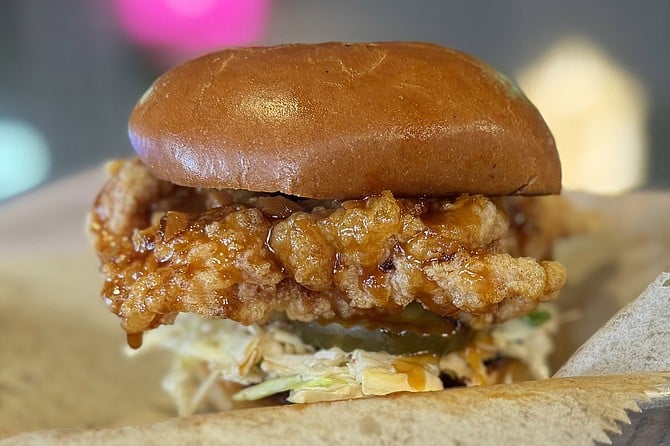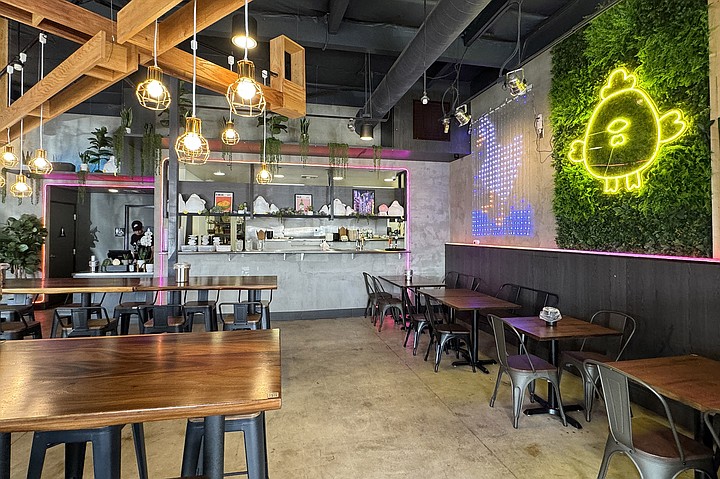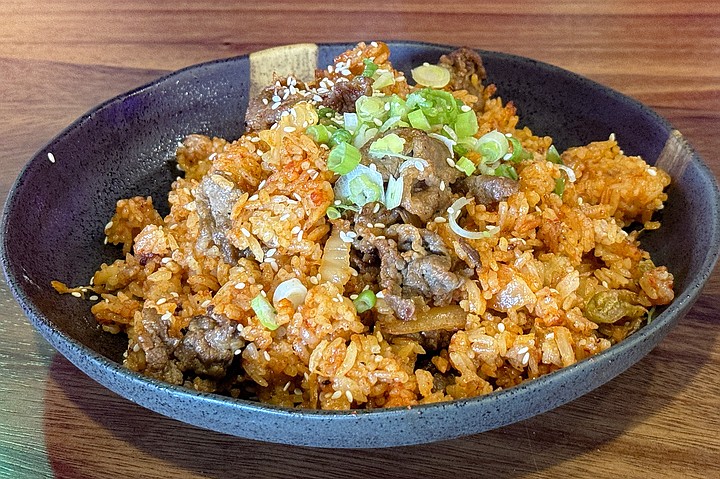 Facebook
Facebook
 X
X
 Instagram
Instagram
 TikTok
TikTok
 Youtube
Youtube

It’s been fun watching the population of Korean restaurants in San Diego slowly tick up, and branch out from the Convoy district into other parts of the county. And yet, the intriguing and distinctive cuisine still feels under the radar.
You know what’s not under the radar? K-Pop.
The Beatles may be bigger than shepherd’s pie, but aside from the U.K. it’s tough to name a nation that has seen its music more readily embraced by Americans than its food. We gobble down rice noodles and ramen, but try to imagine a Thai pop tune playing on commercial radio. Or a Japanese girl band headlining Coachella, the way South Korean phenom Black Pink did last year.
There’s a running theory that fans of K-Pop and other South Korean entertainment are behind the steady rise of Korean food around the world, as documented by headlines such as “After K-pop, K-food is conquering France,” and, “Indians’ love of K-pop and K-dramas makes them hungry for Korean food.” Anecdotally, I’ve spotted signs of it here in San Diego: after Korean-Americans, the demographics I’m most likely to encounter at local Korean restaurants fall in the K-Pop-loving, Gen Z age range.

Which is all to explain why Bok Bok Dok makes sense to me. Kinda.
A recent addition to the Midway District, Bok Bok Dok glimmers with neon light, youthful animal imagery, and a steady rotation of K-Pop music videos on a central TV screen. I mistook the industrial space for a counter restaurant, but my astute server, Zach, insisted otherwise. I grabbed a seat at one of two communal high-top tables and gave him my order. Then I lost myself for a while, captivated by dazzling K-Pop choreography.
In the 2020s, the buzziest dish out of South Korea is the extra crispy, twice-fried chicken, dubbed bok bok chicken, and Bok Bok Dok seems to be a playful way of saying so (like calling it Bok Bok Chik’n). Twice-fried poultry occupies much of the menu, either in the form of fried chicken sandwiches or crispy chicken wings.

Whichever way you go, an array of sauces will follow, including gochujang sweet & spicy, tamarind chili, and soy garlic. And in any case, you can bet the crispiness will be paired with a sauce that’s some part sweet, tangy, spicy, and sticky.
I might have preferred more spice and less sweet, but then, it’s tough to go wrong with wings. And the breading on my garlic soy sandwich proved crispy enough to hold crunch through a soft brioche bun. But the best thing I tried featured beef, not chicken. The $13 kimchee fried rice is studded with the restaurant’s bulgogi.

That marinated beef dish is also featured in Bok Bok Dok’s $13.50 rice bowl, on the $13 bulgogi fries, and in $9.50 pair of bulgogi tacos. But it’s mixed with the spicy, fermented kimchee that the savory beef char finds common cause with an older palate. But may yet pair well with the restaurant’s drink menu, of soju cocktails and fruit-blended lemonades.
I'm old enough to know every restaurant is not for me: if Bok Bok Dok feels a little young to some of us, it's probably by design. But that doesn’t mean there isn’t plenty room for us on the K-Food bandwagon, somewhere in San Diego. With or without the pop.


It’s been fun watching the population of Korean restaurants in San Diego slowly tick up, and branch out from the Convoy district into other parts of the county. And yet, the intriguing and distinctive cuisine still feels under the radar.
You know what’s not under the radar? K-Pop.
The Beatles may be bigger than shepherd’s pie, but aside from the U.K. it’s tough to name a nation that has seen its music more readily embraced by Americans than its food. We gobble down rice noodles and ramen, but try to imagine a Thai pop tune playing on commercial radio. Or a Japanese girl band headlining Coachella, the way South Korean phenom Black Pink did last year.
There’s a running theory that fans of K-Pop and other South Korean entertainment are behind the steady rise of Korean food around the world, as documented by headlines such as “After K-pop, K-food is conquering France,” and, “Indians’ love of K-pop and K-dramas makes them hungry for Korean food.” Anecdotally, I’ve spotted signs of it here in San Diego: after Korean-Americans, the demographics I’m most likely to encounter at local Korean restaurants fall in the K-Pop-loving, Gen Z age range.

Which is all to explain why Bok Bok Dok makes sense to me. Kinda.
A recent addition to the Midway District, Bok Bok Dok glimmers with neon light, youthful animal imagery, and a steady rotation of K-Pop music videos on a central TV screen. I mistook the industrial space for a counter restaurant, but my astute server, Zach, insisted otherwise. I grabbed a seat at one of two communal high-top tables and gave him my order. Then I lost myself for a while, captivated by dazzling K-Pop choreography.
In the 2020s, the buzziest dish out of South Korea is the extra crispy, twice-fried chicken, dubbed bok bok chicken, and Bok Bok Dok seems to be a playful way of saying so (like calling it Bok Bok Chik’n). Twice-fried poultry occupies much of the menu, either in the form of fried chicken sandwiches or crispy chicken wings.

Whichever way you go, an array of sauces will follow, including gochujang sweet & spicy, tamarind chili, and soy garlic. And in any case, you can bet the crispiness will be paired with a sauce that’s some part sweet, tangy, spicy, and sticky.
I might have preferred more spice and less sweet, but then, it’s tough to go wrong with wings. And the breading on my garlic soy sandwich proved crispy enough to hold crunch through a soft brioche bun. But the best thing I tried featured beef, not chicken. The $13 kimchee fried rice is studded with the restaurant’s bulgogi.

That marinated beef dish is also featured in Bok Bok Dok’s $13.50 rice bowl, on the $13 bulgogi fries, and in $9.50 pair of bulgogi tacos. But it’s mixed with the spicy, fermented kimchee that the savory beef char finds common cause with an older palate. But may yet pair well with the restaurant’s drink menu, of soju cocktails and fruit-blended lemonades.
I'm old enough to know every restaurant is not for me: if Bok Bok Dok feels a little young to some of us, it's probably by design. But that doesn’t mean there isn’t plenty room for us on the K-Food bandwagon, somewhere in San Diego. With or without the pop.
Comments